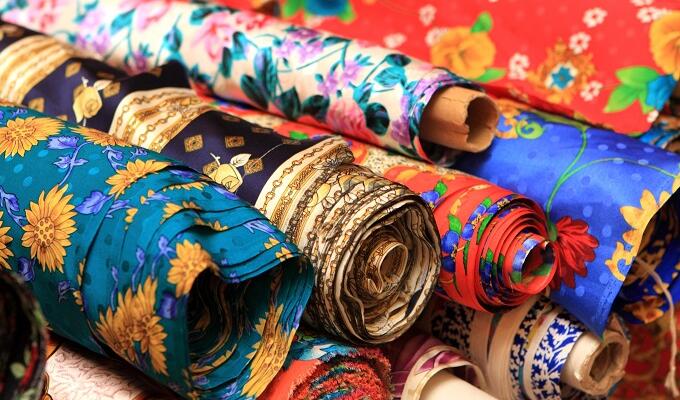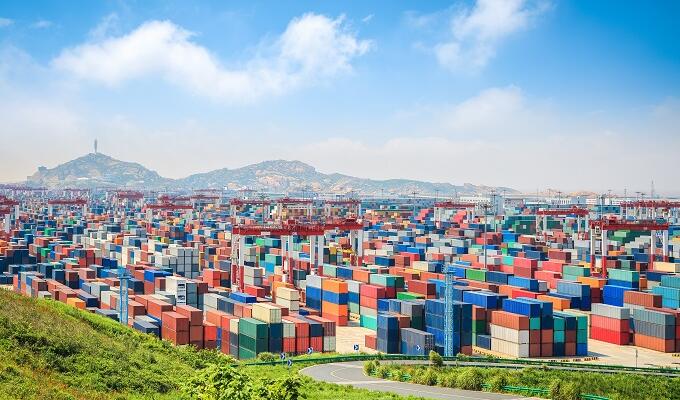

How China’s first ‘silk road’ slowly came to life – on the water
Looking back at major trading route’s history helps define modern-day infrastructure project.
Few images are more enduring in the historical imagination than a train of two-humped Bactrian camels plodding across desert sands from west to east, or vice versa, across the vast open spaces of Eurasia. Now that China is edging towards a modern incarnation of the ‘Silk Road’, it is worth remembering how this emblem of the ancient world actually came into being.
There is no doubt that these overland trading routes existed in the early and late Middle Ages. There is also no doubt that these treks across deserts brought massively important cultural influences from the West to the East while carrying goods in the other direction.
However, there is another side to this tale, one which the Chinese government acknowledges with its huge One Belt One Road (OBOR) transcontinental infrastructure project to link East Asia to the Middle East and Europe. Simply put, the story of the Silk Road, ancient or modern, is as much the story of the sea as the dunes.
The overland routes carried spices and gems and other non-bulky items as well as bolts of silk and packages of unwoven silk thread. They also helped bring the ideas and art of both Islam and Buddhism to East Asia.
That is why Indian art, already impregnated by Greek influences since Alexander the Great, had so great an impact on the art of China and even Japan. It is curious indeed to see motifs in medieval sculptures of the Buddha that survive in Japan that can,
ultimately, be traced back to the ancient Mediterranean.
In the eighth century there were merchants – many of whom were Jewish and known by the still-unexplained title ‘Radhanites’ – who set out from France and in some cases managed to reach China overland. But they were not the true pioneers, as they attached themselves to existing camel caravans. At this point, the route cannot seriously be seen as an example of proto-globalization. The effect on the economy of Western Europe from very small amounts of high-cost luxury goods was minimal.
Routes across Asia could only flourish when political conditions were right and the 11th and 12th centuries were relatively quiet. However, with the rise of the Mongols a new political order imposed peace from Russia to China and made long-distance travel easier. This was particularly the case when the Genoese and Venetians installed themselves in trading centres along the Black Sea, notably at Caffa (modern Feodosiya) in the Crimea and Tana on the Sea of Azov.
The most famous European visitor to medieval China – Marco Polo – was not, if his account is to be believed, typical: he spent many years in the Mongol administration during the 13th century before returning to Venice by sea. But there were Genoese and Venetians who travelled out to Quanzhou on the coast of China and lived and died there. And there were certainly bolts of Chinese silk that found their way to Western Europe; at least one item in the ceremonial regalia of the Holy Roman Emperor was made from Chinese silk.
As the Mongol Empire broke up in the 14th century, the primacy of the maritime route linking China to lands further west became more obvious, though in fact it had continued without a break for many centuries.
Indeed, there were already elements in place in the days of the Roman Empire, when Greek merchants from Egypt reached the Bay of Bengal and massive quantities of pepper reached the port of Rome at Ostia.
But in the days of the Roman Empire, maritime links to China were tenuous in the extreme and Roman embassies to the rival great empire tended to be dismissed. Moreover, Chinese governments tended to look away from the sea, concentrating on the exploitation (and taxation) of the rich resources of their own country.
The great transformation occurred from the seventh century as the area now known as Malaysia and Indonesia was opened up to maritime trade. Under the Song dynasty, based in southern China around 1100, Chinese merchants were encouraged to head across the water. Trade in camphor out of the East Indies pointed in two directions: upwards to the coast of China but also westwards into the Indian Ocean.
A trading network developed in the East Indies under the auspices of the rulers of Sri Vijaya in Sumatra, which linked the world of the Chinese traders to that of the Malay and Indian traders.
A trade route was emerging that was worthy of the name. This was a ‘silk route of the sea.’
Along the sea routes, increasing quantities of spices filtered westwards, passing India and flowing up the Red Sea, where they were moved on to Alexandria in Egypt and collected by merchants from Genoa, Venice, Barcelona and other Western ports. Sometimes they made their way across Europe by land, or eventually around Iberia by sea, ending up in the gingerbread of Hanseatic burghers in Lübeck, Riga or Tallinn.
Ships also carried enormous amounts of Chinese porcelain, much in demand in the Islamic world, which keeps turning up in shipwrecks in and around the South China Sea. The Cirebon shipwreck found off Java carried half a million pieces of porcelain, part of a cargo weighing 300 tons.
Eventually, with the foundation of Malacca at the start of the 15th century the Chinese established a base on the edges of the Indian Ocean. This was the result of the short-lived period of vigorous maritime activity around 1420, when the Ming emperors sent large fleets into the Indian Ocean under the command of Admiral Zheng He to show the Chinese flag and to collect information about the world beyond the Middle Kingdom.
These routes linking East and West long preceded the coming of the Portuguese, Spaniards and Dutch, who transformed the trade of the world after 1500. It was the maritime (rather than the overland) silk route that can be seen as a very early case of what might be called proto-globalization. It is interesting to note that much the same applies today: the quantities of goods carried by train across Asia under the OBOR project cannot hope to match the enormous amount of containerized goods a revived Chinese merchant marine will be able to carry by sea.



